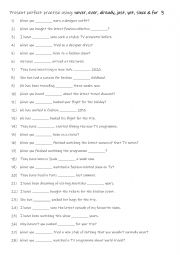
|
A2+-B1 Present perfect practise using never, ever, already, just, yet, since & for 3
First, students need to familiarise themselves with adverbs and their use. Then they read the sentences to see which one is needed to complete the gap-fill. Answers on page 2.
Level: intermediate
Age: 8-100
Type:
Downloads: 116
|
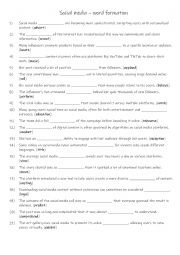
|
B1 Social media word formation
Understanding word formation allows students to expand their vocabulary, enabling them to express themselves more precisely and creatively. Knowing how to manipulate words helps them create varied sentence structures, making their writing more engaging and dynamic. Mastering word formation is key to achieving higher levels of language proficiency, ...
Level: intermediate
Age: 8-100
Type: worksheet
Downloads: 115
|
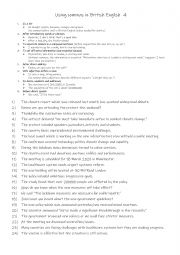
|
Using commas in British English 4
First, students need to familiarise themselves with the 8 reasons why a comma is used. Then they read the sentences and punctuate them accordingly. Answers on page 2.
Level: elementary
Age: 8-100
Type:
Downloads: 121
|
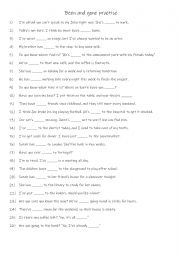
|
A2+-B1 Been & gone practise 2
Using "been" and "gone" properly helps students master the present perfect tense, which is essential for expressing completed actions that still impact the present.Misusing these words can lead to confusion about whether someone is still at a place or has already returned, so learning the difference is essential for clear communication. Each word i...
Level: intermediate
Age: 8-100
Type:
Downloads: 111
|
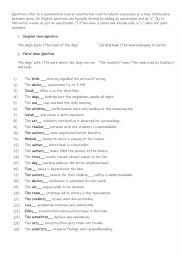
|
Singular and Plural genitives
This worksheet is suitable for A2-B1 level students. Genitives refer to a grammatical case or construction used to indicate possession or a close relationship between nouns. In English, genitives are typically formed by adding an apostrophe and an "s" (�s) to the end of a noun, or just an apostrophe (�) if the noun is plural and already ends in...
Level: elementary
Age: 8-100
Type:
Downloads: 112
|

|
As a result and therefore (1)
This gap-fill exercise is suitable for students at an intermediate level, specifically around B1-B2 on the CEFR (Common European Framework of Reference for Languages) scale. At this level, students are expected to have a good grasp of basic grammar and vocabulary, and exercises like these help reinforce their understanding of how to use conjunction...
Level: intermediate
Age: 12-100
Type:
Downloads: 106
|
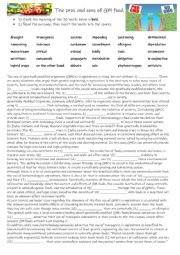
|
The pros and cons of GM food.
1300-Word reading essay with a gap fill exercise about the advantages and disadvantages of GM food. It takes an in-depth look at both sides of the argument.This sheet is suitable for higher level B1 to C1 students of all ages. An answer sheet is included. For higher level students they could be put in groups to give / present their opinions in a pr...
Level: intermediate
Age: 14-100
Type:
Downloads: 1854
|
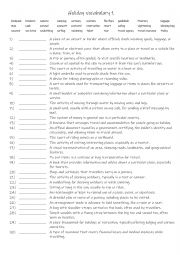
|
A2+-B1 Holiday vocab 1
Learning holiday vocabulary is essential for effective communication, trip planning, and enjoyment. It helps travellers navigate logistics, understand important terms like "passport," "reservation," and "itinerary," and engage with local culture through words like "souvenir" and "currency." Familiarity with terms related to safety ("travel insuranc...
Level: intermediate
Age: 9-100
Type:
Downloads: 104
|
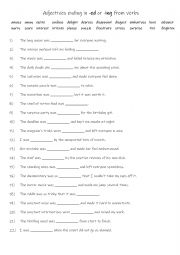
|
B1-B2 22 Adjectives ending in -ed or -ing from verbs practise
Learning these adjectives helps students describe emotions, feelings, and situations more accurately, allowing you to express yourself more vividly. Understanding the difference between -ed and -ing forms prevents common errors. For example, "bored" describes how you feel, while "boring" describes something that causes that feeling. Practicing thes...
Level: intermediate
Age: 10-100
Type:
Downloads: 114
|
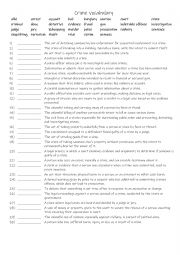
|
A2+- B1 Crime vocabulary - 30 words
Students familiarise themselves with the 30 crime related words and their meanings.Then they read the definitions and write the word being described in the space provided. Answers on page 2.
Level: intermediate
Age: 9-100
Type:
Downloads: 119
|












